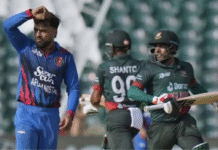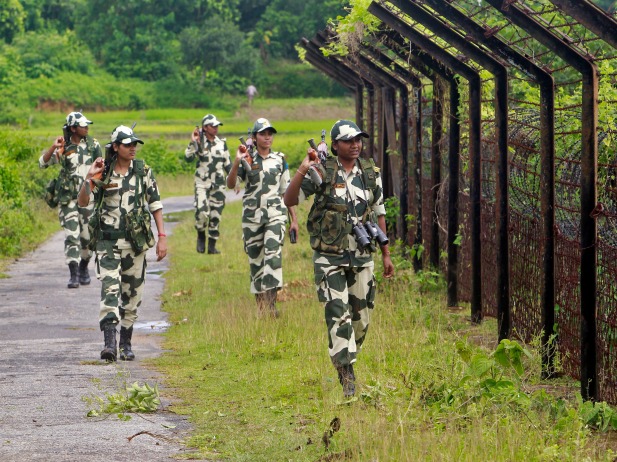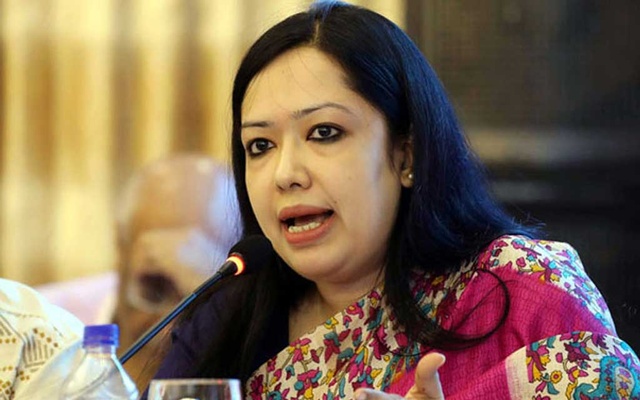
After a long day of lessons, the school bell peals—heralding freedom. While city children pack up and wander home, in a far‑flung corner of the hills, a different scene unfolds. At Ghagra High School in Kawkhali, Rangamati, small mountain girls race toward the football pitch. Under the mellow glow of the late afternoon sun, the grass sparkles, and in their eyes there’s a glint of ambition — the same light that dances on the dewy field — because they believe that through football they can one day rise to greatness.
A cradle of female footballers
Ghagra High School is often called the cradle of female footballers, having given birth to talented names like Rupna, Rituparna, Anuching, Monika, and Anai. Many girls from this school are also in various age-based national teams. On this very field, their successors – Masaing U Marma, Subharthi Chakma, Macrao Marma, Namanita Chakma, Joyota Chakma – sweat it out every day. Their eyes too hold dreams of wearing national colours someday. With firm resolve, they aspire to surpass even Rupna, Monika, or Rituparna.
Hearing all this, one might think there is some magic in Ghagra High School, that these budding female footballers are nurtured with all possible facilities. But in reality, none of this exists. Without witnessing it firsthand, it is hard to believe the kind of environment from which these hill girls emerge to represent Bangladesh on international stages.

Training in mud and barefoot
Even reaching Ghagra High School is quite an ordeal. After travelling along winding hilly roads deep inside, one finally arrives at the school, situated far below the main road. There, little girls can be seen practising. The field becomes a mess with just a little rain – uneven ground, clumpy grass. Some players wear boots, but many practise barefoot. At first glance, it may seem they avoid boots to keep them dry from puddles. But the truth is, they have no boots at all. And those who do, their boots are of such poor quality that caked mud renders them unusable within moments.
Their coach, Shanti Chakma, says, “We have a severe shortage of good boots and other equipment here. Everyone thinks we are well-off, but although we get some support at times, these are never long-term solutions.”
Above all, the biggest problem is the training field itself. During the dry season, it remains somewhat usable. But in the monsoon, it turns into a disaster. Being located below the road level, mountain streams and rainwater flow down to this field. There is no drainage system. Practising in stagnant water increases injury risk. The school’s headteacher, Chandra Dewan, says, “These are little girls practising here. If they get injured due to the field condition, it could cause long-term damage. Moreover, we have no medical facilities nearby, nor proper transport. So if someone gets hurt, it is nearly impossible to take them for immediate treatment.”

Fighting poverty, prejudice and social norms
In Bangladesh, women’s participation in football remains low due to social and religious barriers. Yet remarkably, from the very beginning, girls from ethnic minority communities have had higher representation. Half of the starting eleven in the South Asian champion women’s team belonged to ethnic minorities.
For over a decade, girls from the three hill districts have consistently participated in football, making their presence felt in national squads. But alongside poverty, these hill girls have faced mocking remarks and mental abuse from various corners of society. Despite this, they have brought home trophies, hoisting Bangladesh’s flag with pride on global stages.
Amidst all these adversities, their dreams remain unbroken. Manisha and Amisha – twin sisters – train together on this very field. They share their dreams, “Our elder sisters played here and are now in the national team. Like them, we too dream of playing for Bangladesh. Our family fully supports us.”

Chandra Dewan says, “We start training girls from childhood. Through regular nurturing, we help them gradually reach age-based teams. Despite facing limitations like lack of equipment, we continue regular training. If we had long-term sponsors, these girls could bring far more glory to the nation.”Coach Shanti Chakma adds that due to their life in the hills, the girls have natural physical fitness, interest in sports, and greater continuity – fewer drop outs compared to elsewhere. Also, traditional attire restrictions do not impact them as much as in conservative communities, making it easier for their families to send them to play.
Seeds of change sown by persistence
However, none of this change happened overnight. Today’s situation is the result of long struggle and dedication from people like Chandra Dewan and Shanti Chakma. At first, parents did not want to send their daughters to play. The biggest reason was the uncertainty of a future in women’s football. How did this change? Chandra Dewan recalls, “In the beginning, I used to send people to every house to bring girls to the field. Some parents agreed, some sent them reluctantly. Many outright refused, saying there was no future in football for girls.”
“But when they saw our girls earning names not just in age-based teams, but also at national and international levels, parents began sending their daughters willingly. Now they come themselves, with hope in their hearts. Reaching this stage required a tough fight.” She adds.
The female footballers of Ghagra have reached these heights fighting against adversities and harsh environments. Their struggle has sparked a revolution in women’s football. But the opportunities and facilities they get remain far from adequate. As mentioned before, many lack even a pair of boots. Those who have, use low-quality ones repeatedly patched up.
Beyond this lie further problems: no drainage on the field, its unevenness, nutritional deficiencies among players, lack of a physio. Though these issues are often discussed, if everything remains confined to words, Bangladesh’s football awakening and World Cup dreams will remain unfulfilled.

What should be done
Since a major part of the national women’s football team comes from this very school, it is now imperative to design special plans for Ghagra. This school is functioning like a football academy, producing promising players, yet it lacks every facility an academy should have.
Both the Federation and the Government should pay special attention to this golden field. If urgent steps are taken to improve the pitch and provide other necessities, many more Rituparnas, Monikas, Rupnas – or girls even better than them – will rise from here.
Because now, the ball truly lies in the court of the Bangladesh Football Federation and the Government.









